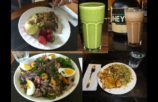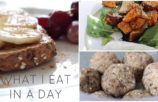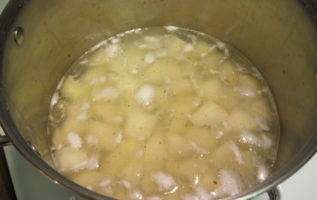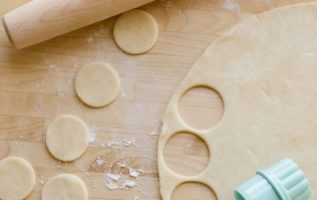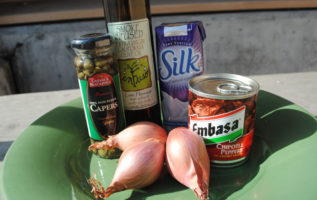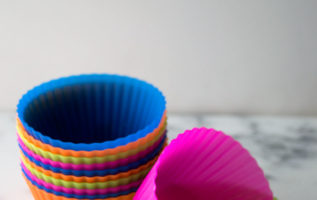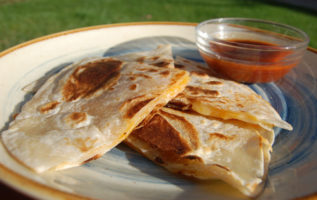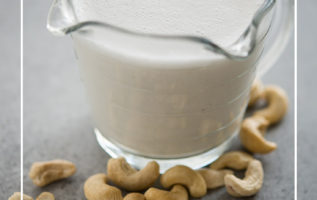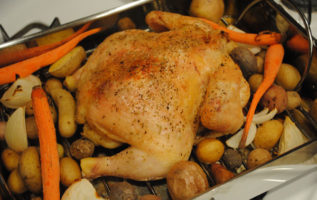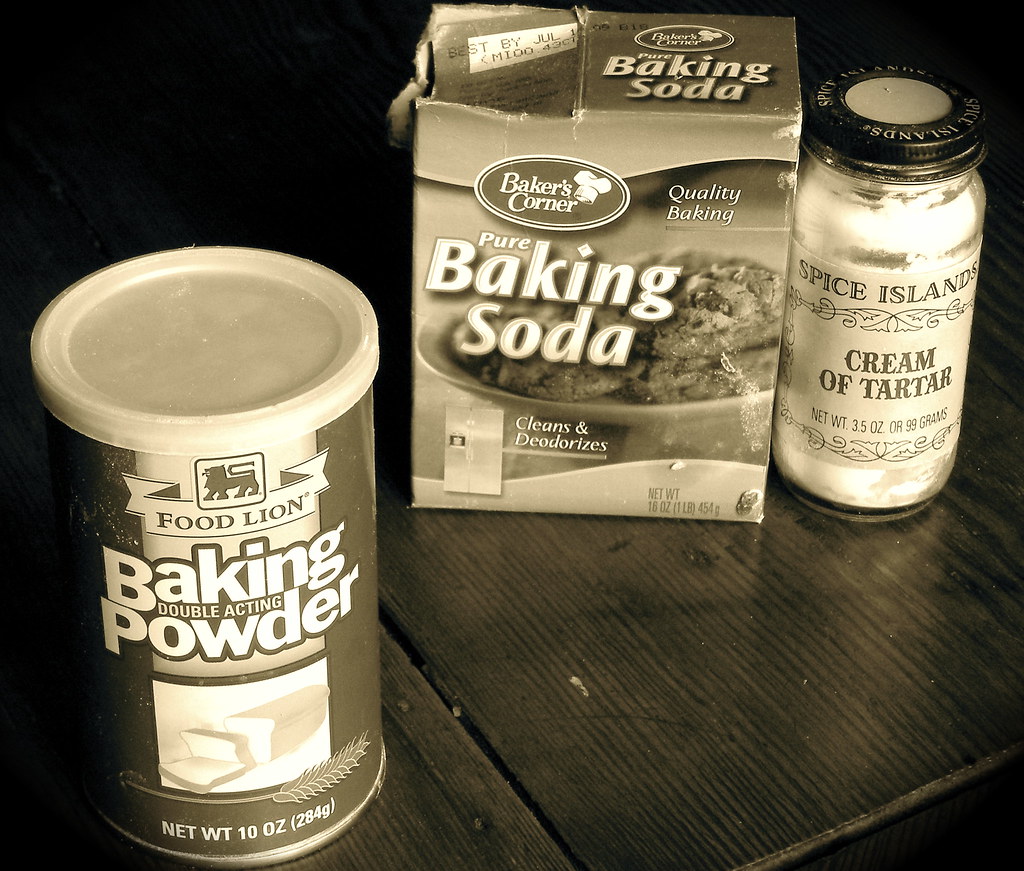
Photo: melystu / Flickr
No offense, flour and sugar, but chemical leaveners are way cooler than you. I mean, flour and sugar are important and essential in dessert-baking, but chemical leaveners like baking soda and baking powder get all sciencey right off the bat. Without them, you’d be eating some pretty flat, dense cookies. Respect your chemicals.
The most commonly used chemical leaveners in baking are baking soda and baking powder. You know them, you love them, you’re glad that one comes in a box and another in a can because you wouldn’t know how to tell them apart otherwise. Because what is the difference? Let’s take a look.
BAKING SODA
Baking soda, also known as sodium bicarbonate (NaHCO3) is a natural alkaline ingredient extracted from mined trona ore, found in plenty in Green River, Wyoming. Since baking soda is a base, it reacts with acidic ingredients such as yogurt, buttermilk, citrus juice, brown sugar, molasses, and natural cocoa powder.
When added to a batter or dough, baking soda reacts immediately with the acid and moisture, releasing carbon dioxide. This creates air bubbles that are trapped inside the batter or dough. When the batter is heated, it releases a little bit more gas, causing the baked good to rise. Baking soda must be used quickly or the effect of the initial reaction will wear off.
If you’ve ever heard someone say, “Blech! These cookies taste like baking soda!” it means that too much baking soda was used for the amount of acidic ingredients in the recipe. Once all of the acidic ingredients have been neutralized, any excess baking soda will create a soapy taste.
BAKING POWDER
Baking powder is simply baking soda with the acid already added. The powdered acids most commonly used in baking soda are potassium bitartrate (cream of tartar) and sodium aluminum sulfate (alum). Baking powder also contains corn starch to ward off moisture that would cause a reaction in the baking powder. Because baking powder already contains acid and is therefore self-neutralizing, it can be used in recipes where no acidic ingredients are present.
Most baking powder on the market today is double-acting. This means that it reacts once when liquid is added and again when heated. As a result, baked goods made with baking powder can rest longer before being baked than those made with baking soda.
HOW MUCH SHOULD I USE?
Obviously, follow your recipe. But if you’re gettin’ crazy and inventing in the kitchen, a general rule of thumb is to use up to ¼ teaspoon of baking soda per 1 cup of flour, and up to 1 teaspoon of baking powder for every cup of flour.
Baking powder will neutralize itself, but if you are using baking soda, ½ teaspoon will neutralize:
1 cup of yogurt, sour cream, buttermilk, or citrus juice
¾ cup of honey or brown sugar
½ cup natural cocoa powder
Happy experimenting!
MEASURING CHEMICAL LEAVENERS
Because baking powder and baking soda are so light (about 5 grams per teaspoon), it is best to measure them using dry measuring spoons, rather than by weight. Simply scoop up the baking soda or baking powder, and level the top with a straight edge.
SUBSTITUTION
Baking powder can always be used in place of baking soda. However, expect any acidic flavors in the recipe to be more prominent because they will not be neutralized. For every ¼ teaspoon of baking soda in a recipe, substitute 1 teaspoon of baking powder.
Using baking soda in place of baking powder is much more complicated and I don’t recommend it. Just run to the store and buy a can of the powder. Or make homemade baking powder!
MAKESHIFT BAKING POWDER
Yeah, you can make your own baking powder. For 1 teaspoon of baking powder, combine ¼ tsp baking soda + ½ tsp cream of tartar + ¼ tsp corn starch. Because this isn’t double-acting like the stuff you buy in the store, your batter/dough should be used immediately.
BAKING SODA AND POWDER?
Some recipes call for both baking soda and baking powder. This might seem a little strange, but there is a method to the madness. In such cases, the baking powder is really doing the leavening. The baking soda is then added to cut the flavor of any acidic ingredients and/or enhance browning. Cookies, muffins, and pancakes made without baking soda can come out pale. Just a little bit of baking soda (about ¼ teaspoon per cup of flour) will promote browning without leaving a soapy aftertaste.
Source: siftandwhisk.com (defunct blog)


